 |
All the peoples of the world possess a graphic art of their own, that of the extra-European populations having been often and stupidly considered "primitive" by a certain school of European ethnocentrism (in the same time the French used the degrading term of "peuplade" (instead of "peuple") to indicate so called "not civilized" peoples) - it is necessary to say that it was a time of full colonial and missionary expansionism, with a will to discredit the cultures, which were going to be destroyed ... Since then, the ethnologists have modified their view and the most experienced of them even turn to the computer in order to clarify the very complicated hank of marital and social links characterizing most of those societies, which are everything but primitive.
Regarding the graphic arts, the regular customers of auction places know that many sculptures of Africa and of the so-called South Seas are often negotiated at prices comparable to those of Western great masters who, for their part, have never hidden their interest for the art of the extraeuropean populations.
Quote : The Cubist works of art draw their inspiration from the African art, but it is the work of the painter Paul Cézanne that incited the artists to deal with the variation of the cubism. At the end of the 19th and the beginning of the 20th century, the European cultural elite discovered the exotic artworks from Africa and Oceania. Artists such as Paul Gauguin, Henri Matisse and Pablo Picasso were intrigued and inspired by the power and the simplicity of those styles coming from foreign cultures. About 1904 Picasso met Matisse by means of Gertrude Stein, at a moment when both artists had recently acquired an interest in the art and the masks of African tribes. |
The most remarkable thing, in any case what intrigues me at most is that the Australian aborigines have of course developed a very interesting sculpture, the most spread form of art by traditional peoples, but they managed to enrich it with several forms of painting, and how astonishing! They began to decorate caves in the well-known style of rock paintings, and they invented then a painting of their own some centuries before the European invasions. It is necessary to say that, for a long time, most of the artworks were just temporary ones, being destroyed after the ritual ceremony upon which they had been realized: for example drawings made with sand. Then, the artists moved to sustainable artworks.
And now we find ourselves confronted with a resolutely modern and very stylized painting, and when we examine it, for example, the very first image below, we just think at first sight: "Wait a minute, it should be by Vasarely!". But it isn't! And, it is at that point that we realize that the Ungarian genius of the geometrical abstraction had abundantly borrowed from the Australian Aborigines.
Here I have to admit that the conversion of these works into stereoscopics is always delightful, so much our Australians have got a rabid imagination. Their works are always realized in the instinct, without any preparatory drawing, with simple baguettes or by way of brushes, according to a technique prefiguring pointillism (Pissarro, Seurat, Signac ...). For sure, the "remasterisation" via a conversion into 3D should make possible to increase the popularity of that art, in any case, to bring it towards a bigger audience, the original work being reproduced in an endlessly way. Will you just look at the colors of these paintings?
Of course all the artworks displayed below are by Australian Natives.
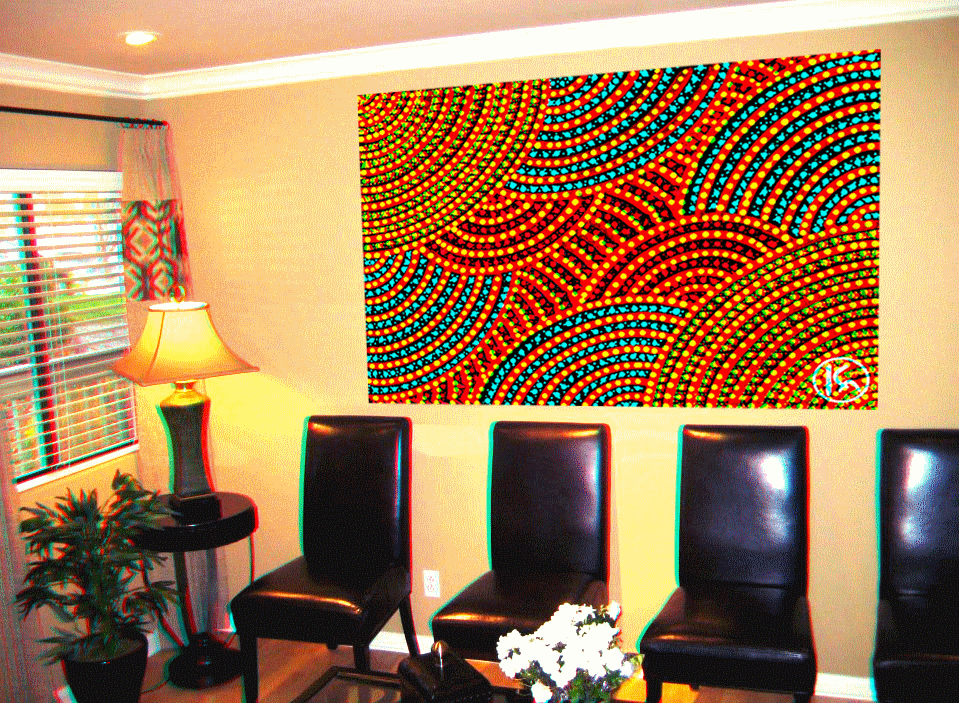 |
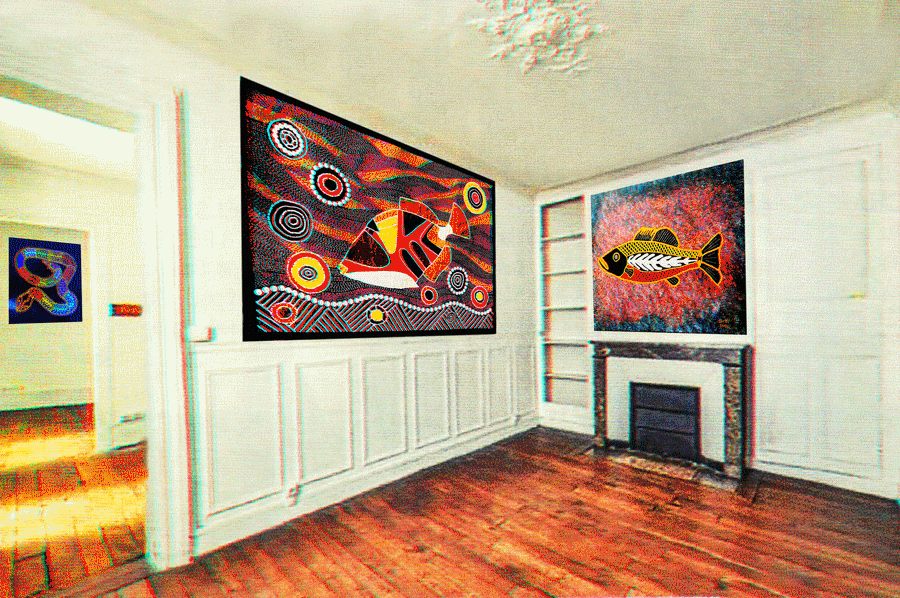 |
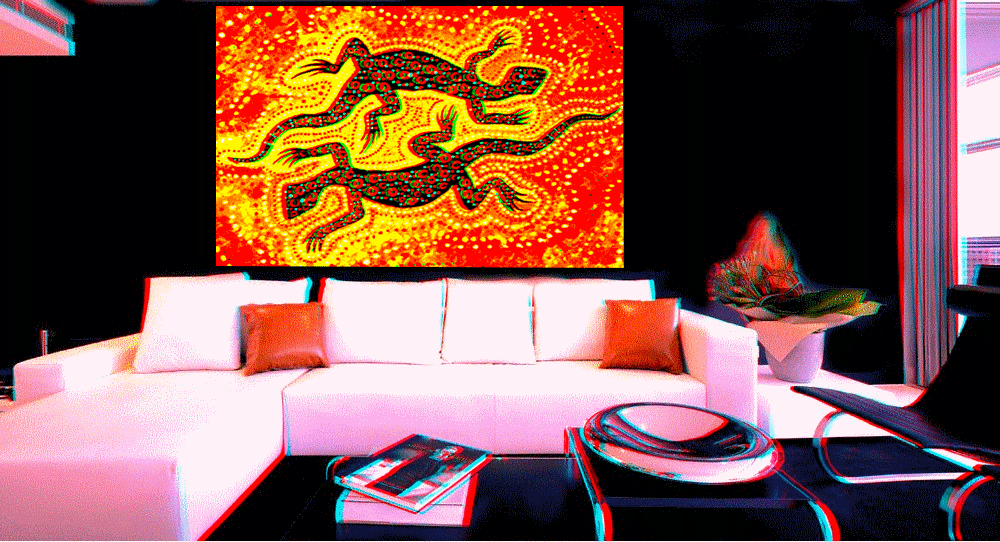 |
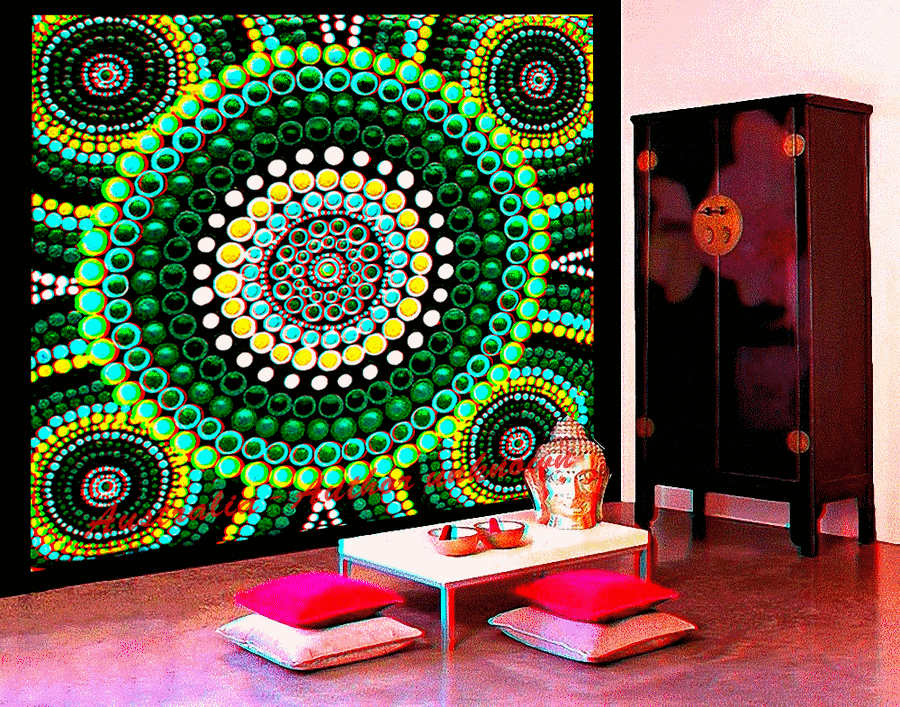 |
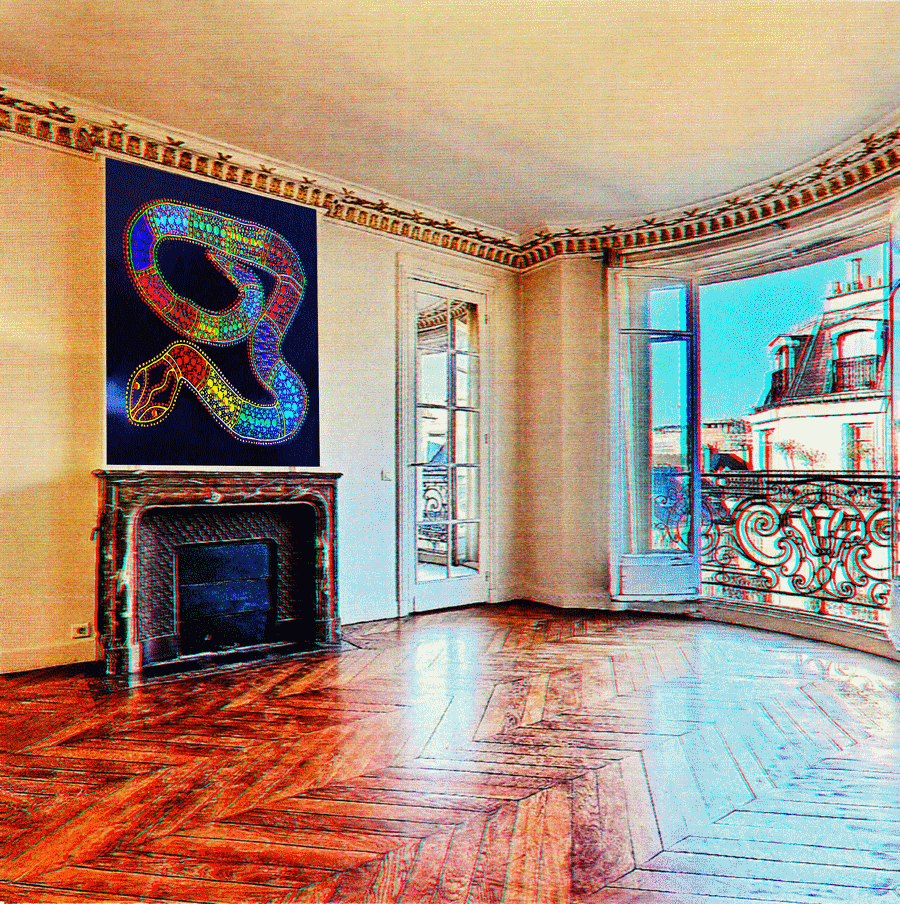 |
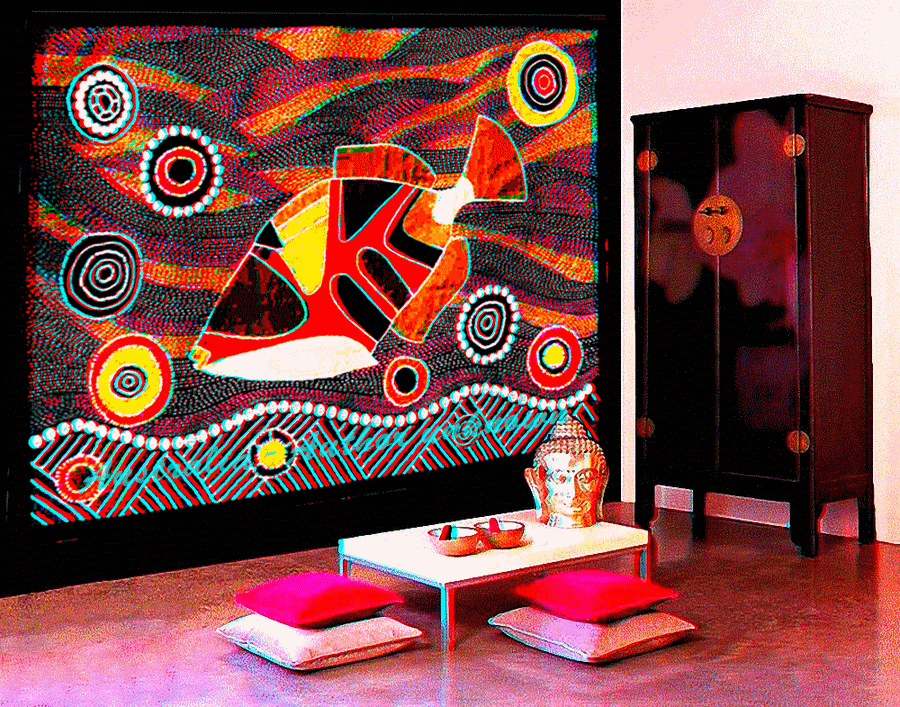 |
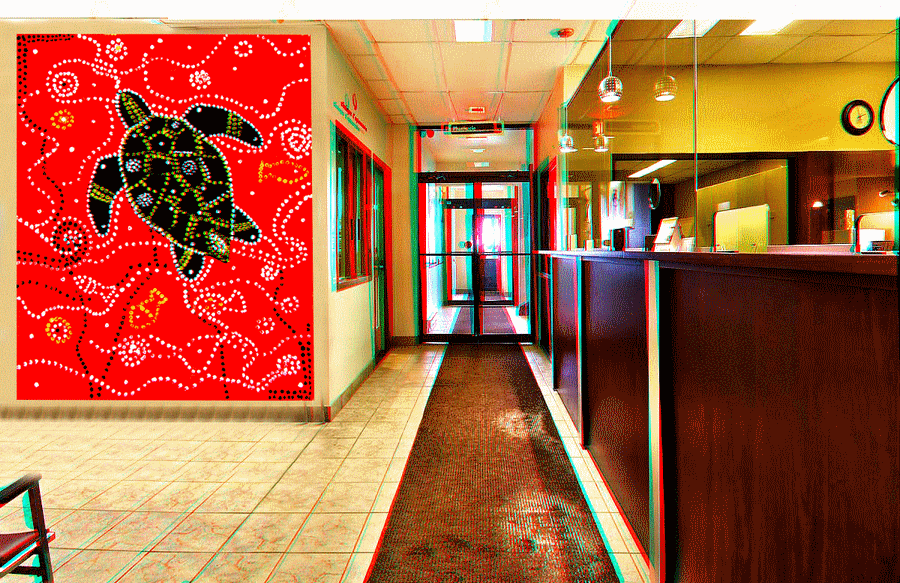 |
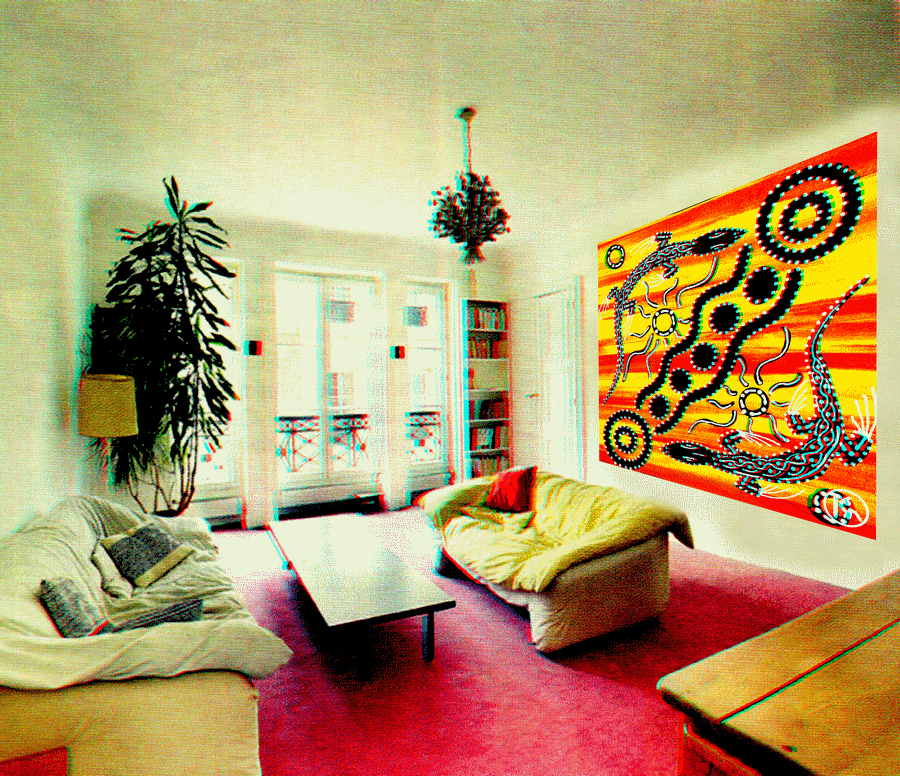 |
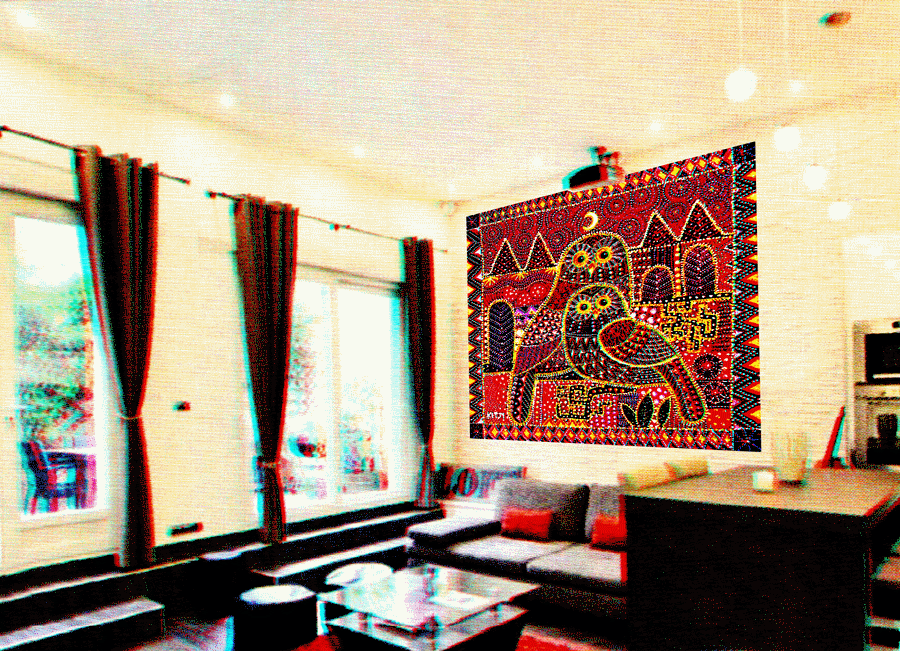 |
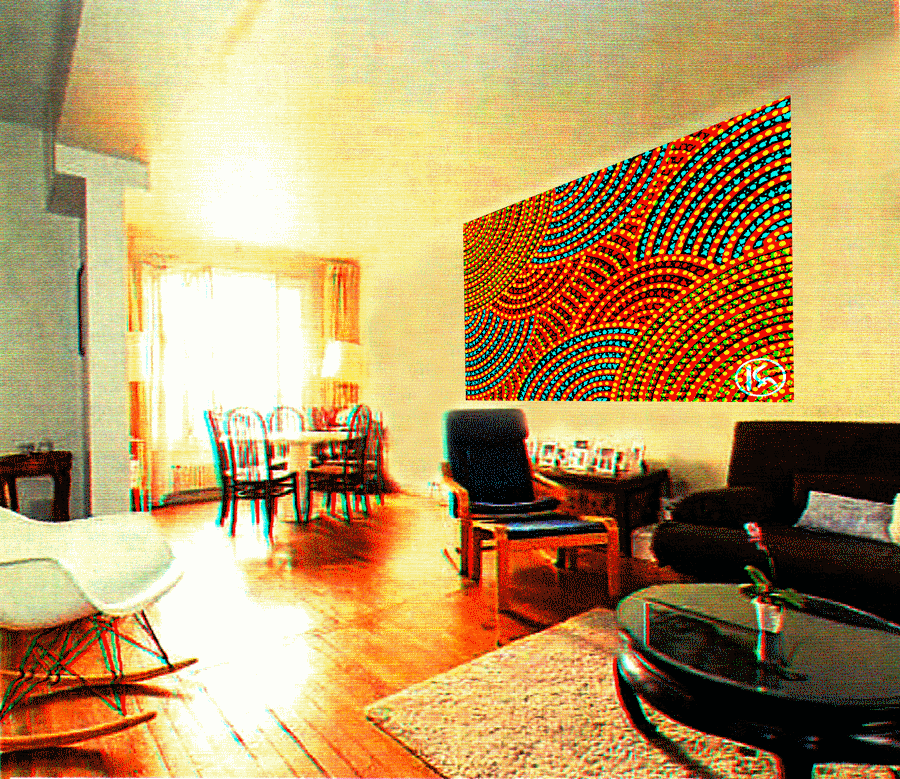 |
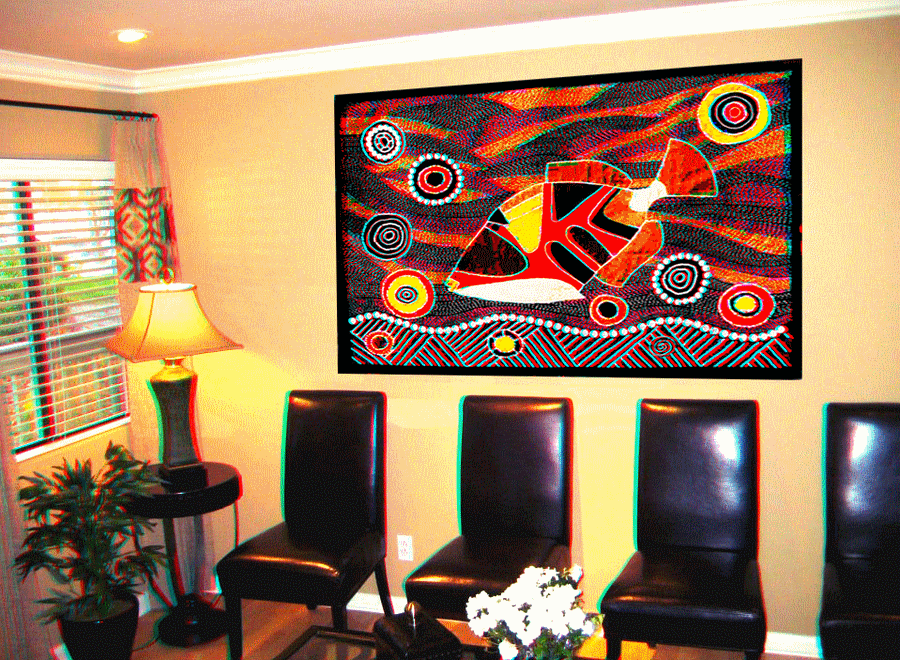 |
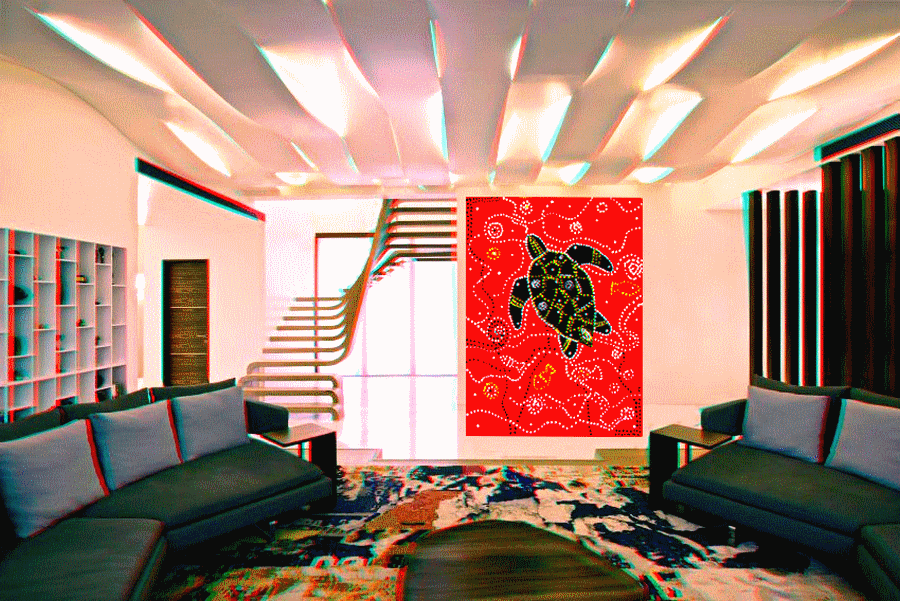 |
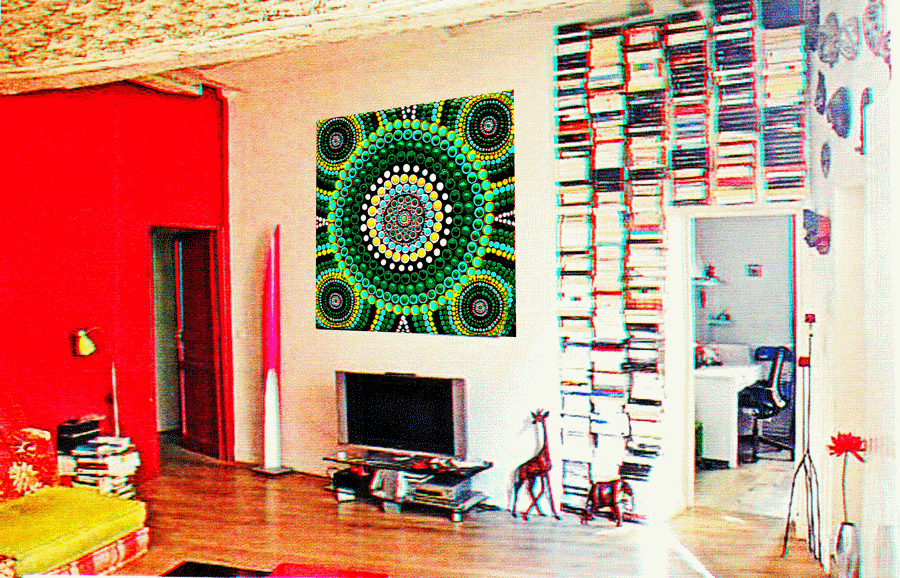 |
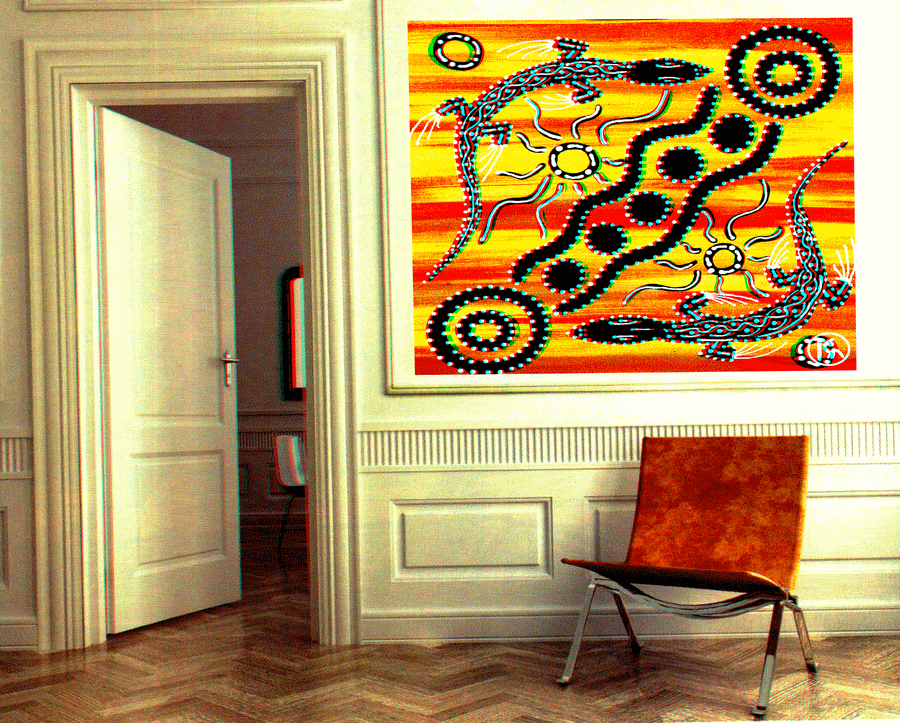 |
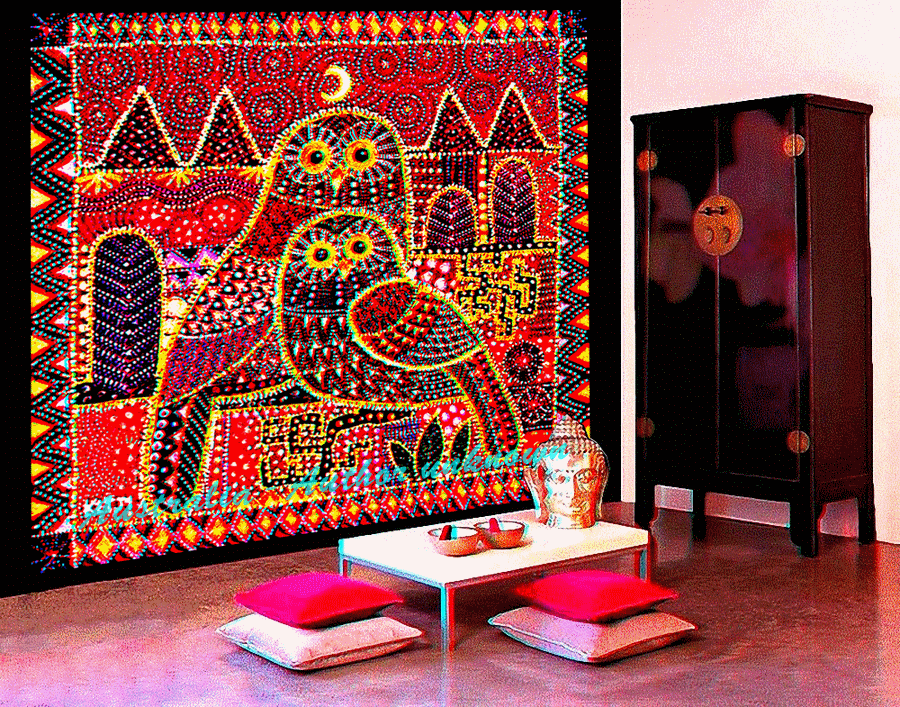 |
| Readings (French) : Vacarme - Ausanthrop - Analyse |
